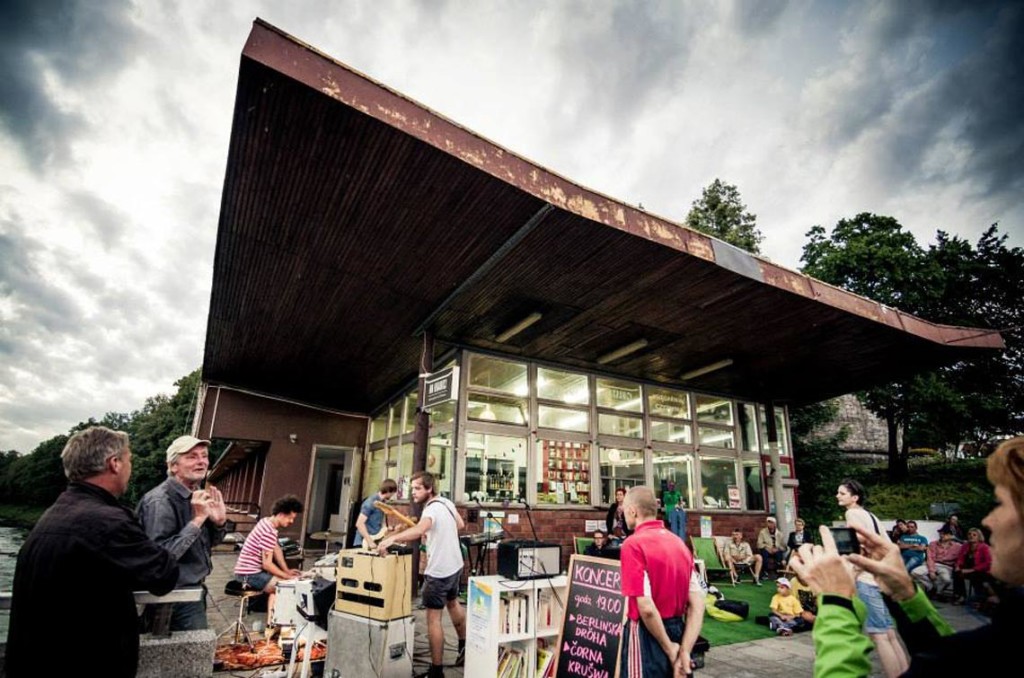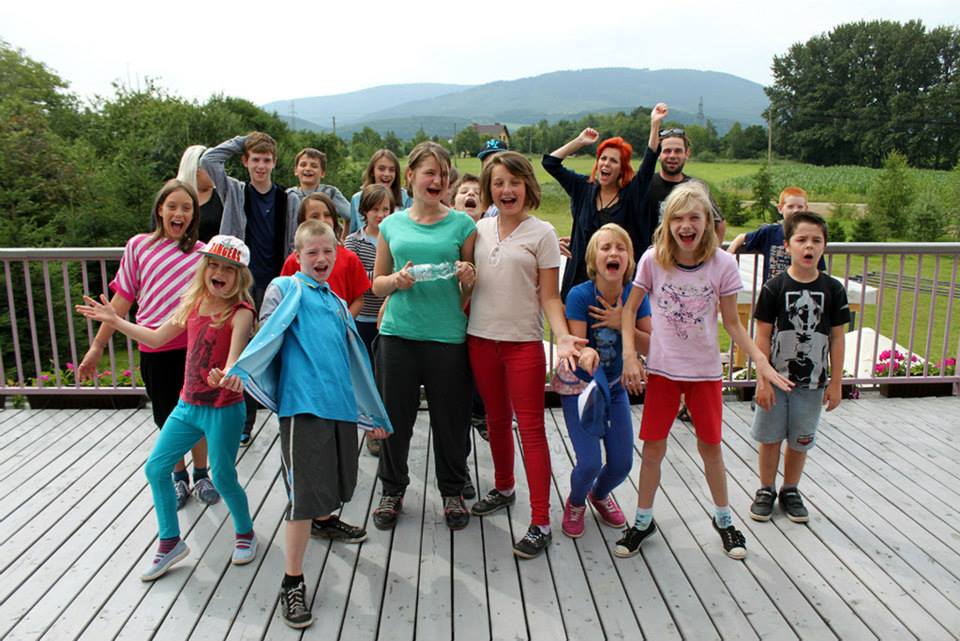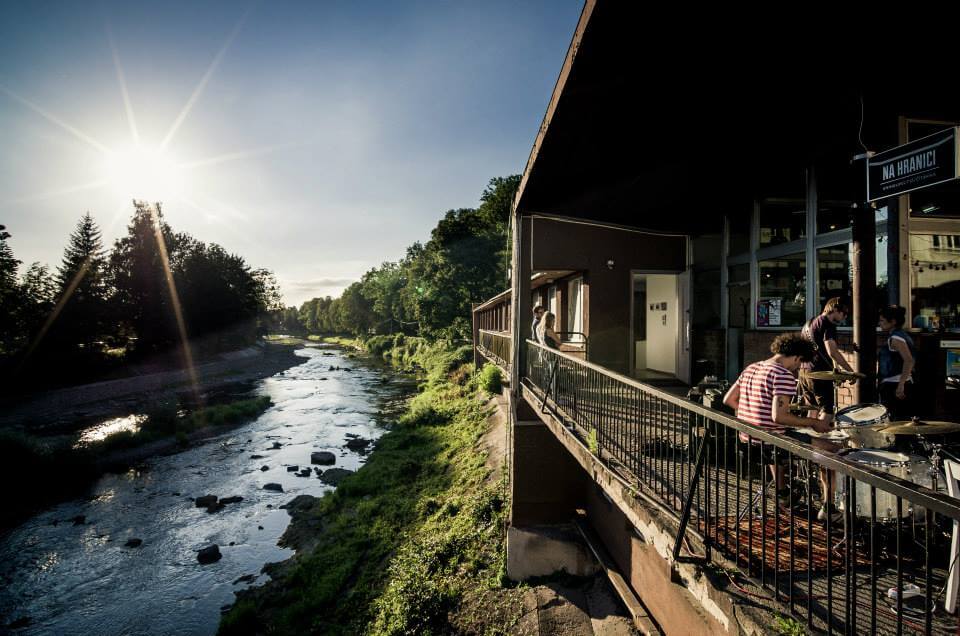Since 2009, Krytyka Polityczna’s cultural centre “Na granicy” (On the Border) has been run from the former Polish-Czech border control building on the river Olza in Cieszyn, in southern Poland. For months there has been speculation as to whether the building, located on Zamkowa Street, would have to be vacated, forcing Krytyka Polityczna and the eight other organizations, which share the premises to look for a new base. On 28 June 2016, the local authorities finally announced their decision that the lease on the building would not be extended due to health and safety concerns, and that the organizations using the site would have to search for a new location.
“This place is no longer filled with violence”
Despite the local authorities citing health and safety concerns as being the driving force behind the closure of the building, there is no money in the city’s budget to renovate or demolish it. This means that from October, the building will remain empty, which will undoubtedly worsen the state that it is in. Krytyka Polityczna, along with Cieszyn’s main cultural institution, Zamek Cieszyn, have been trying to renovate the building for years. In 2012 they won second place in a contest organized by the Dulux Let’s Colour Fund, guaranteeing them the materials to carry out the renovation project. Despite this, the local government did not grant them consent to carry out the work, so the award was not received and the renovation never took place. Following this, Krytyka Polityczna applied within the confines of ZIT (Integrated Territorial Investment) for financial support in order to redevelop the land between Cieszyn’s main railway station and the former control building. Once again, however, the local government did not consent to these plans. It is hard to understand the reasons behind the long-standing opposition by the local government to the renovation of the building, but there has been speculation that it could be politically motivated.
It is hard to understand the reasons behind the long-standing opposition by the local government to the renovation of the building, but there has been speculation that it could be politically motivated.
The building itself has a very interesting history. It was built in the 1960s with the primary function of controlling the Polish-Czech border – a function which was no longer needed after 2004, when Poland and the Czech Republic joined the Schengen area. After plans to turn the building into a food shop were rejected in 2009, the first NGOs – Krytyka Polityczna and Stowarzyszenie Serfenta – began to operate from there. Over the last seven years the building has become a well-established and recognizable alternative community centre.

However, the building holds some negative connotations, especially for the older inhabitants of Cieszyn. For them, the building represents violence and personal tragedy, as during the state socialist period, many families were divided and only those with a permit could legally cross the border. Agnieszka Muras, one of the founding members of the team behind “Na granicy”, believes that one of the main aims of using the building was to problematize private memory and to challenge the negative stance towards the building. One of the first attempts to reintroduce the building to the local residents was the organization of a seminar titled, “Granica w budowie” (The border in construction) which comprised of public consultations and debates with architects. In 2012, during the Long Night of Museums, ex- border guards demonstrated to the public how the former control building functioned. The aim was to show the people of Cieszyn how the building had been transformed and that “this place is no longer filled with violence,” explains Muras. From this, it is easy to see why so many architects emphasize the symbolic meaning of this building for Cieszyn: “In the local context the former border control building is an equivalent of relics of the Berlin Wall-it is a symbol of consensus and the overcoming of divisions,” describes Grzegorz Piątek, a Polish architect.
Social work with children
However, for Cieszyn’s children, the former control building was never seen as a symbol of violence. Social work with children, especially those from underprivileged backgrounds, has become the primary focus for “Na granicy”. In 2010 “Na granicy” ran a month-long summer camp, where team leader Joanna Wowrzeczka, along with then students, Anna Cieplak, Agnieszka Muras and Anna Pluta, held activities for children aged between 6 and 12 years old, including meetings with Polish artists. Many of the children who were associated with the cultural centre still remain connected with it today: “This was the moment of a formation of a cohesive group of friends. Its extent will be verified by time and…Cieszyn itself”, explained Agnieszka Muras.

Following the summer camp, a book titled “Bieda” (Poverty) was published by Krytyka Polityczna. This was followed by two more books focusing on cooperation and confidence. During the month, the children got involved with students, trainees, volunteers and high school pupils. Over the years the centre has organized a lot of different workshops and as a result of the cooperation between the children and students, an interactive map of Cieszyn was produced. In 2014, the first excursion with the children outside of Cieszyn took place to the mountains and was financed by a crowd-funding campaign. Following this, in summer 2015, a trip was organized to the Polish seaside -for many of the children, this was their first time at the sea.
The former control building, with its interesting and problematic history has served as an inspiration for “Na granicy” for years, yet it will now stand empty and neglected on the east bank of the Olza River.
This is not the end
However, the eviction doesn’t signify the end of Krytyka Polityczna’s activities. Despite losing the premises, “Na granicy” will continue to function from a new location in Cieszyn. The former control building, with its interesting and problematic history has served as an inspiration for “Na granicy” for years, yet it will now stand empty and neglected on the east bank of the Olza River. However from this moment onwards, it will be viewed as a symbol of the government’s negligence and lack of respect towards the longtime engagement of the local residents, who wanted their city to be more than just another provincial Polish town.
***
Read more:
Cieszyn: Kids without their place as building faces demolition
![Political Critique [DISCONTINUED]](https://politicalcritique.org/wp-content/uploads/2015/09/Political-Critique-LOGO.png)
![Political Critique [DISCONTINUED]](https://politicalcritique.org/wp-content/uploads/2015/09/Political-Critique-LOGO-2.png)

